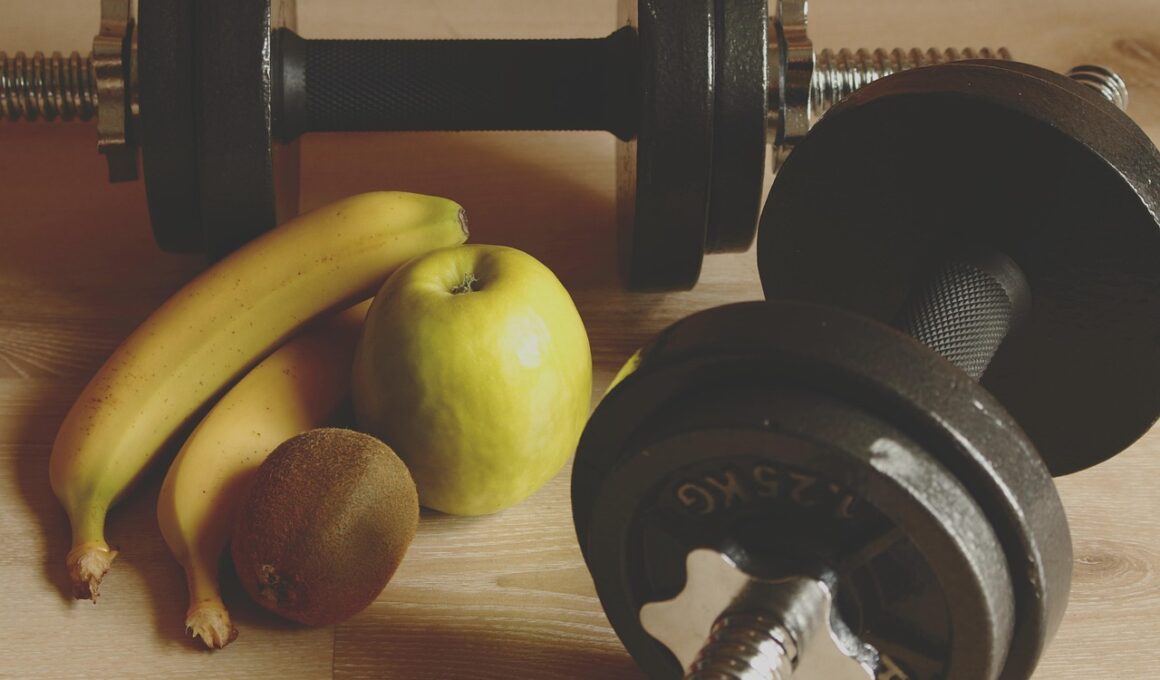Strength vs Technique: Debunking Common Weightlifting Myths
In the world of weightlifting, the age-old debate between strength versus technique often prevails. Many believe that sheer strength alone determines lifting success, leading to a neglect of crucial technical aspects. This misunderstanding can hinder progress and lead to injuries. Strength does play a vital role; however, it must be coupled with proper technique to ensure lifts are performed effectively and safely. Overemphasizing strength can confuse beginners, who may feel compelled to lift heavier weights without understanding or applying the correct form. Beginners should focus on mastering techniques first, progressing to heavier weights only once proficient. It’s important to build a foundation before accumulating additional strength. Technique helps in developing muscle memory and stability, enabling weightlifters to maximize their potential. A lack of focus on technique may lead to poor lifting mechanics, which can severely impact performance in the long run. Furthermore, refining technique can uplift an athlete’s performance while reducing the risk of injuries. Ultimately, a balanced approach in weightlifting is crucial for long-term success.
While some argue that strength is all that matters, this viewpoint overlooks the pivotal role of technique. Many weightlifters achieve remarkable results through the marriage of strength and technique, showcasing how critical both elements are in achieving desired goals. A well-rounded lifter acknowledges that mastering technique can enhance strength gains. Individuals who lift using improper form often plateau sooner than their technically sound counterparts. In fact, having solid techniques allows weightlifters to execute lifts in a more efficient manner while targeting specific muscle groups accurately. Focusing too much on lifting heavier weights can lead to undesirable habits, affecting performance negatively. As lifting technique improves, lifters can distribute weight more effectively throughout their bodies, fostering better engagement of the core and support muscles as well. Additionally, techniques like breathing and bracing are equally crucial for optimal lifting results. Proper breathing aligns with technique, sustaining energy levels during workouts. Athletes should embrace an integrated approach where training sessions routinely involve learning and refining technique in conjunction with strength-building exercises. This comprehensive method leads to overall improvement.
The Importance of Technique in Weightlifting
Emphasizing technique holds paramount importance during strength training sessions. Many beginners embark on their weightlifting journeys with a singular focus on lifting heavier weights. This mindset, however, can lead to significant setbacks, including injuries and ineffective training. By prioritizing technique, lifters can build a solid foundation, which ultimately enhances their ability to lift heavier loads safely. In general, good technique ensures that weightlifters engage target muscles efficiently. For example, utilizing proper foot placement influences stability and strength during various lifts. Athletes benefit from learning how to stabilize their bodies while executing lifts, which aligns perfectly with their strength training goals. Employing techniques that align with individual stances and grips is crucial; this aspect prevents injuries and enhances performance. Moreover, integrating flexibility training enriches technique development, allowing lifters to achieve greater range of motion. Attention to detail and consistent refinement adds value during training sessions. Participating in training programs with a focus on core lifts encourages recovery through active participation. Weightlifters should consistently seek feedback from experienced trainers to refine techniques further and ensure that form and strength coexist harmoniously.
Many experienced weightlifters emphasize the connection between strength and technique throughout their training regimens. By recognizing how both elements interact, athletes gain valuable insights into how improving one aspect can enhance the other. For instance, developing technical prowess influences strength indirectly by promoting efficient movement patterns and muscle engagement. In practical terms, this means that lifters who invest time in honing their lifting techniques are likely to observe increases in strength over time. Conversely, those focusing exclusively on strength without regard for technique may find themselves frustrated as they struggle with plateaus. It’s essential for weightlifters to establish training routines that incorporate both strength and technique elements, balancing weightlifting workouts to maximize outcomes. Progress assessment should include regular check-ins to evaluate both technical improvements and strength gains. Lifters can also leverage technology, such as video analysis, to seek objective assessments of their performance. This approach allows an opportunity to alter training strategies if necessary. Encouraging lifters to keep records of their techniques during training may promote self-awareness and accountability with their progress. This nurtures a culture of continuous improvement that transcends mere weightlifting outcomes.
Common Myths Busted: Focus on Strength Alone
Weightlifting myths perpetuate misunderstandings that often lead individuals down the wrong path. One prevalent myth is the idea that strength is the only factor that contributes to lifting performance. Many aspiring weightlifters think that pushing their limits on weights is the ticket to success. However, the truth diverges radically. An overemphasis on strength causes individuals to overlook critical aspects of their training, resulting in poor lifting mechanics. Weightlifters must realize that focusing solely on strength can breed complacency, inhibiting necessary growth when it comes to refining technique. Additionally, this mindset dismisses the importance of working on fitness fundamentals, such as balance and coordination. Lifters should re-evaluate their approach to training by recognizing that strength alone is insufficient to achieve long-term weightlifting success. Heightened awareness of proper techniques fosters greater adaptability, allowing lifters to respond effectively to various weightlifting demands. Finally, believing in the strength myth can result in injuries, as improper movements lead to undue stress on joints and muscles. To combat this, individuals must embrace an integrated philosophy blending both strength training and technique coaching for holistic growth.
In the weightlifting community, misconceptions persist regarding the necessity of strict adherence to traditional performances. Misbeliefs surround unique lifting styles, leading many to abandon significant portions of their potential. Distinguished lifters utilize techniques aptly suited to their body types whether incorporating unique grips or pace variations to optimize performance. Acknowledging personal variations strengthens awareness and clarifies the specialization of movements according to individual biomechanics. This level of comprehension enhances their ability to respond effectively to performance expectations. Furthermore, lifters need to recognize that progress can take different forms—it’s not solely tied to increasing weights. Achievements often manifest in improved techniques, showcasing adaptability to different lifting dynamics or routines. Lifters must document their progress holistically to witness enduring growth. Routine assessments identify strengths and weaknesses, bridging the gap between strength and technique improvements. Moreover, the sport emphasizes teamwork, particularly regarding training partners and coaches who can help refine techniques while motivating weightlifters to reach their personal bests. In essence, showcasing individuality within technique is essential, but understanding the significance of established foundational practices can lead to overall refinement.
Conclusion: Balancing Strength and Technique
To culminate, the balance of strength and technique in weightlifting is critical for building a sustainable training philosophy. Lifters should consistently challenge preconceived notions that prioritize strength over proper techniques. Instead, a cultural shift towards valuing both elements as equally vital components will foster success. Athletes should approach their training journeys with an open mind, recognizing that both attributes shape strength-training experiences positively. Additionally, weightlifters benefit from being proactive in seeking continuous education to ensure they stay updated on best practices. Engaging in workshops and seminars increases awareness of innovative training methods that enhance performance. Subsequent variations in techniques may present opportunities to break through existing plateaus. A unified training philosophy positions weightlifters toward achieving personal goals effectively while mitigating risks of injuries through adaptation to new challenges. Therefore, combining strength-building exercises with technical refinement will yield long-term success. Mastering both facets can potentially give athletes an edge, leading them to excel in their weightlifting pursuits. Embracing this integrated methodology will often resonate throughout their fitness journeys, establishing a fulfilling progression path.
Further, the importance of nurturing both strength and technique cannot be overstated. Lifters need to be self-aware in evaluating their progress over time regardless of target expectations. Recognizing that true improvement lies not just in heavier weights but also richer technique insights fosters personal accountability over journeys. Moreover, stress on recovery and proper technique enhances overall well-being, as weightlifters realize the effects of training on daily life. Building competence in weightlifting allows athletes not just to become stronger but also empowers them to achieve their fitness goals efficiently. Celebrating small wins, such as improved mechanics or increased confidence, lays the groundwork for sustained enthusiasm and motivation across all training levels. Ultimately, both elements must harmonize; lifters should not discount the nuances of refinement. Understanding dynamics pertaining to movement patterns can lead to establishing a consistent training narrative that aligns both aspects effectively. This balanced approach may involve individualized plans tailored to the specific athlete. Lifters who engage authentically with their training experiences will cultivate a profound appreciation for learning, evolving, and performance. This invites a long-standing commitment to weightlifting that generates success against overwhelming odds.


